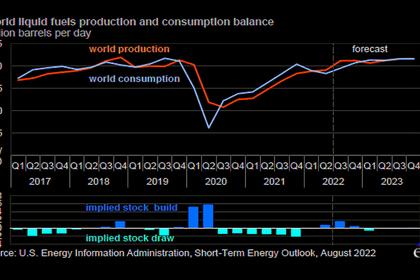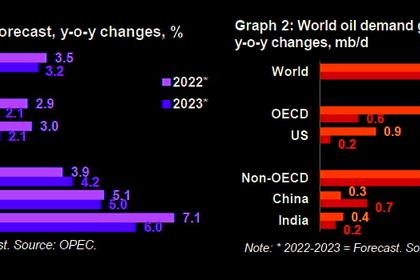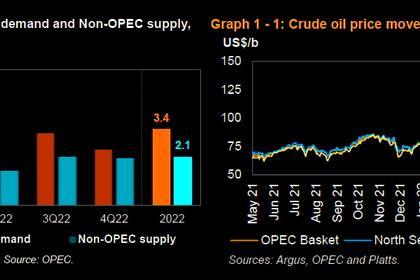
OIL GAS DIGITAL TRANSFORMATION

By PETER BERNARD Chief Executive Officer Datagration
ENERGYCENTRAL - Sep 6, 2022 - The digital capabilities of organizations have evolved at a rapid rate over the last fifteen years. Businesses must keep up with popular trends and technology to remain competitive. The COVID-19 pandemic accelerated digital transformation and technology in general, altering the landscapes across nearly all organizations. Industries like healthcare and hospitality were changed completely and will be forever. That said, other industries that were indirectly impacted by the pandemic were also pushed over the tipping point and sent into technological evolution.
One industry where digital strategies have lagged is upstream oil and gas. Many companies have been hesitant to implement the latest wave of digital transformation and have fallen behind in comparison to other industries. Decision-makers now face a digital deluge as solutions and platforms continuously flood into the landscape. Just a few of the technologies include:
- Artificial Intelligence (AI) and Machine Learning (ML)
- Quantum Computing
- Predictive Analytics
- Internet of Things
With so many options, many executives have found it difficult to decide what technologies to invest in. They must ask themselves what technology will best serve an organization’s growth target? A great place to start is with data. Cisco estimates that the average oil platform generates up to 2TB of data every day, leaving engineers and operators with mountains of data to manage. The issue is that E&P companies usually do not have the communications, storage, and analytical capabilities to make this data useful. Engineers and operators are faced with months of meticulous analytical work just to extract value from the vast ocean of data. To make this information actionable in real-time, organizations will need the support of a unified data model. A Unified Data Model uses AI and ML technology to connect and cleanse all that data to create a unified view of key business metrics and standardized analytics for all users.
AI/ML in oil and gas
The potential for AI/ML in upstream oil and gas is massive. E&P companies can help unlock the full potential of wells and rigs by integrating AI/ML capabilities into their operations. With processes powered by AI/ML, operators and engineers can work with full flexibility while increasing productivity.
Many organizations across multiple industries have implemented some form of AI/ML, with a McKinsey survey reporting that 56% of respondents have implemented AI adoption in at least one function. With a jump from 50% in 2020, it’s clear that digital transformation and the rate of implementation of AI/ML will only increase. E&P companies must be prepared to jump on the trend or risk falling behind. With benefits ranging from optimized well selection to predictive analytics, the power of AI/ML cannot be ignored in oil and gas.
The predictive power of AI/ML
Analytics powered by AI/ML has enabled greater predictive capabilities than most physical models. The demand for more drilling is ever-growing as surging gas prices and embargos on Russian energy have left Americans paying an arm and a leg to fill their gas tanks. More drilling will inevitably lead to more oil rigs in the field, which in turn leads to more maintenance and potential downtime. With wear and tear being unavoidable, executives who take steps to implement predictive maintenance will have a key advantage in reducing operational costs. With time, the technology will continue to grow and become easier to use while its ability to process vast arrays of data improves.
Exploration powered by tech
By implementing a unified data model, E&P companies can automate their exploration efforts to improve new well placements and better identify workover candidates. Companies can develop and implement automated processes for evaluation that can quickly help inform what wells will yield the highest estimated production. Instead of a manual selection process that can take months on end, E&P companies need to invest in digital capabilities powered by AI/ML that automate processes to best identify new well candidates. Operators can reduce project time as well as increase CAPEX efficiency by automating processes with the power of AI/ML.
Digital transformation and the use of AI does not just support exploration, it can also help revitalize old and abandoned wells. Just like in exploration, digital tools help revive brownfields by standardizing and automating the workover candidate selection process. Every year, tens of thousands of wells are left shut in waiting for abandonment or revitalization. Machine learning capabilities run through hundreds of brownfields to best identify a list of candidates for revitalization that will improve CAPEX and reduce risk. Not only can AI/ML support new ventures, but it can also identify the best wells to reactivate, saving time and money.
In the end, digital transformation in oil and gas is more of a transformation problem than it is a digital one. Many executives are hesitant to invest heavily in digital transformation but continue to be hampered by the cost of poor quality. To improve processes and workflows, they must turn to solutions like AI and ML to transform their operations. Deriving value from the heaps of data collected by E&P companies will be a crucial step in any company’s digital transformation. Any organization’s digital journey will be defined by their level of investment and commitment to overhauling workflows and streamlining processes.
Earlier:















